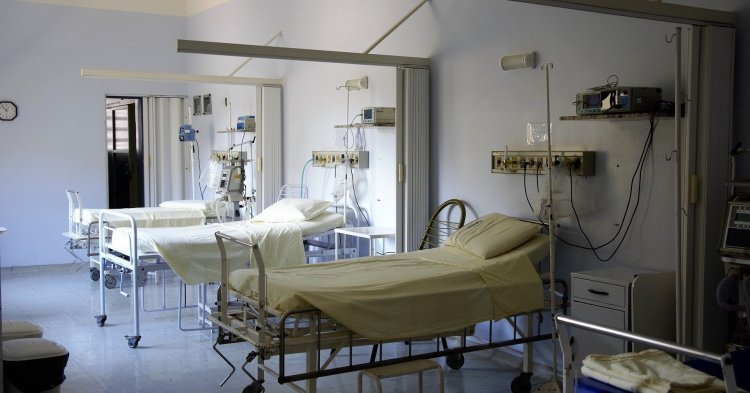The road so far: difficulties and achievements in coordinating the COVID response
The idea of a “European Health Community” was first presented in the 1950s by the French government. The plan advocated a common health insurance scheme, harmonisation of public health policies, and joint research efforts in medicine. While the idea did not come into fruition at the time, the need and willingness for health cooperation did not disappear for good.
Looking back on the year 2020 so far, a key debate has been health workers’ access to personal protective equipment (PPE), such as masks and gloves. When coronavirus arrived in Europe, a number of European countries imposed export bans to avoid their equipment being sold to another country. For example, Germany imposed a ban on 4 March, but lifted it on 19 March, as the European Commission had stepped in and threatened Germany with legal action. The EU imposed its own European-wide ban in mid-March, until it was lifted on 10 June.
The pandemic is not over, and more quarrelling over life-saving supplies is on the horizon. Countries around the world are already racing to secure access to the coronavirus vaccine whenever it is available. The news about the United States buying nearly the entire global stock of remdesivir, a type of medication used to speed up the recovery of coronavirus patients, illustrates how fierce a competition there may be for future vaccine stocks.
Fights within Europe over which nation gets to vaccinate its people first would undermine already strained European solidarity. Instead, the correct approach would be to base the decisions on availability, need and equality, not on national borders. All eyes are on the European Commission, as the institution that has been entrusted with acting in the European interest. In June, the Commission indeed announced that it is making ‘Advance Purchase Agreements’ with vaccine companies on behalf of the member states, and proposed joint procurement of vaccines at an EU level, precisely to avoid bickering between the member states. In the spring, the Commission procured PPE for 25 member states, and also financed a common European ‘rescEU’ stockpile for medical equipment.
While procurement schemes ensure – to use the language of the Single Market – the free movement of goods within Europe, we have also witnessed instances of ‘free movement of patients’. Notably, stories of German hospitals treating small numbers of patients from Italy and from the French border regions heartened Europeans in the spring. As noted by Deutsche Welle’s Mark Hallam, treating patients across borders can be crucial when some countries are facing more COVID cases than others.
What the law says: the legal dimension of European public health
In the EU treaties, the key provision concerning health is Article 168 TFEU. While the article gives a guiding principle for the EU’s policies, namely that “a high level of human health protection shall be ensured in the definition and implementation of all Union policies and activities”, health policy is in principle a core Member State competence. The Union is only empowered to coordinate or supplement Member States’ actions pursuant to Art. 6 sentence 2 lit. a) TFEU in connection with Art. 2 (5) TFEU. This fundamental allocation of competencies has left its mark on the EU’s approach to the corona crisis: member states have been implementing their respective national measures, often without consulting their European partners, while the Commission tried (at first with very limited success) to coordinate and create a common European response.
However, there are a few fields where the Union can actually put legislation forward. In the treaties, these exceptions can be found in Art. 168(4), lit. a - c TFEU. Using this legal basis, in connection to the general ‘approximation of laws’ clause from Article 114, the EU has been able to pass regulation on the market authorisation of various products including pharmaceuticals, medical devices, blood and cells tissues, organs, disinfectants and tobacco. However, none of these seem to have had a big impact on the common COVID-19 response. On the other hand, under a different legal basis, the EU is investing significant sums of money in health research. The Horizon 2020 research programme, the Third Health Programme, the EU’s fund for Strategic Investments, and cohesion policy have all enabled investments in health in the recent years.
In a federal system, health competences can be arranged rather differently. For example, in Germany (see Art. 74 (1) Nr. 19, 19a and Nr. 7 in the Grundgesetz), Berlin can legislate or regulate on statutory health insurance and social long-term care insurance, regulate health protection, admission to the health professions, pharmaceuticals, and medical devices. Meanwhile, the sixteen states mostly focus on hospital planning, investments for hospitals (for example buildings and large equipment), and public health services (for instance, prevention of infectious diseases).
In other words, while national authorities are legally well-equipped to face pandemic outbreaks even within federal systems, the EU level is not. No wonder that few people even know there is a European Commissioner for Health.
Looking ahead: ideas for reforming European Public Health through a stronger European approach
If we want better cooperation and a united response to future health crises, we need to review the way the EU can act in the field of health. For obvious reasons, this question has been a hot topic in EU-related discussions throughout the spring – and we have compiled some key ideas below.
The European Centre for Disease Prevention and Control (ECDC) and the European Medicines Agency (EMA) are EU agencies active in the field of health. Both of these, as well as the rescEU mechanism, should receive more competences, budget and staff, so that they can better respond to global crises like the one we are facing today. In fact, one could also merge the EMA and ECDC and create a fully integrated ‘European Health Agency’ – in the words the liberal MEP Guy Verhofstadt, “composed of the continent’s best experts, instead of the 27 [national] teams of experts we have now”.
During the pandemic, the Commission created an EU-wide ‘COVID-19 expert panel’ which helped draft common guidelines for tackling the crisis. The model could be developed into a permanent and independent expert team that would develop standards, issue recommendations and draft common protocols for Member States. Furthermore, as the Socialists & Democrats group in the European Parliament noted, there is no European equivalent to the US Biomedical Advanced Research and Development Authority (BARDA) which develops countermeasures against pandemics, emerging diseases, bioterrorism, and chemical, nuclear and radiological threats. The new European Health Agency could be a natural place to house the European counterpart for the American institution.
The EU’s Civil Protection Mechanism was upgraded in 2019 by introducing the ‘rescEU’ facility that enables gathering European reserves of resources. Besides the medical stockpiles created in response to COVID-19, the reserves include among other things field hospitals that can be used during nuclear, chemical, radiological or biological incidents. Despite the efforts, the corona crisis demonstrated that European resources in key fields were clearly insufficient: Europe had to depend on Chinese supplies of equipment like masks. Learning from the experience, the EU should ensure the best possible autonomy in fundamental supplies, and consider increasing the sizes of common stocks where necessary.
As for the ‘free movement of patients’ mentioned earlier, the expressions of solidarity came only weeks into the crisis, and after crude measures such as border closures. However, no matter how symbolic the gestures were, they still saved human lives. Logically, then, such cooperation should be institutionalised, instead of simply depending on individual countries’ political will. The EU’s 2011 patient mobility directive goes some way towards this, as it guarantees individual patients’ right to seek planned medical care in another Member State, and around 200,000 Europeans take advantage of the right each year. However, institutionalised reallocation of patients whenever one country’s health system is overburdened would be a different approach, one that places responsibility on the Member States rather than relying on individual patients’ initiative and knowledge of their rights. If a Member State’s public health sector cannot cope with a sudden and unprecedented crisis, one could therefore imagine introducing an equivalent to the solidarity clause in Art. 222 TFEU or to the civil protection clause in Art. 196 TFEU into the health policy chapter of the treaty. This would enable not only help from the Union but also mutual assistance between Member States within the framework of EU law. At the same time, it would ensure that the basic principle of subsidiarity is applied in the field of public health during normal times. The way ahead would be to either revise the treaties, or alternatively, explore the flexibility clause in Article 352 TFEU which enables the Council to take a unanimous decision deemed necessary for fulfilling treaty objectives, even if such powers are not foreseen by the treaties.
Additionally, one might also envisage common minimum standards for European hospitals. In May, the Socialists & Democrats European Parliament group raised the idea of a directive which would set common criteria like hospital beds, doctors and nurses per head, level of health expenditure, and “access and affordability of healthcare for all, including vulnerable populations”. However, it is rather doubtful whether Articles 168 and 114 TFEU would provide a sufficient legal basis for such legislation. In other words, the road to minimum standards would be through treaty revision. Another, more immediately applicable idea coming from the Socialist & Democrat reflection paper is “stress tests” for national health systems, similar to the tests run in the energy and banking sectors, which would assess national health systems’ preparedness for any future crisis.
A relevant point to note here is that healthcare is among the most expensive things a government does, whereas the EU’s budget remains woefully small. The EU’s entire budget is only around 1% of the Union’s overall GDP, while the Member States spend between 5% and 11% of the GDP only on health, according to World Bank data. In other words, the responsibility for providing healthcare would always remain in the Member States – the most that the EU could do is regulate and give instructions to the member states. On the other hand, if the EU does require minimum standards concerning the level of service provided, questions would arise as to what support the EU can provide for countries facing financial crises – which takes us from a discussion on a European Health Union into one concerning a fiscal union.
Finally, health data sharing between Member States could improve patient mobility. The European Commission says that most Europeans “cannot easily access their health data across borders”. As a solution, the Commission proposed last year a common format for exchanging electronic health records, promising that improved data exchange can not only improve the healthcare patients receive, but also to reduce costs as patients don’t need to be tested twice in two different countries. Other data sharing initiatives are already underway: for instance, in 2018, thirteen European countries signed a declaration on sharing genetic information across borders, aiming to improve disease prevention and scientific understanding of diseases thanks to the larger, pooled data bank. In sum, data exchange is a crucial tool that can improve our understanding of health problems, as long as GDPR and other data protection rules are complied with.
Seizing the moment: from crisis to progress
The history of European integration is about weathering crises together, and then fixing the problems that made the crisis worse than it needed to be. The upcoming Conference on the Future of Europe, now hopefully starting in the autumn, will come just in time to host debates on a European Health Union. In these discussions, it is necessary to keep the subsidiarity principle in mind: providing healthcare has been one of the major tasks of national governments for decades, and continues to be best exercised nationally and regionally. At the same time, coordinating action at an EU level can improve the quality of care in multiple ways. With the COVID pandemic still not over, deeper cooperation on health would be in line with the spirit of the times.



Follow the comments: |
|
